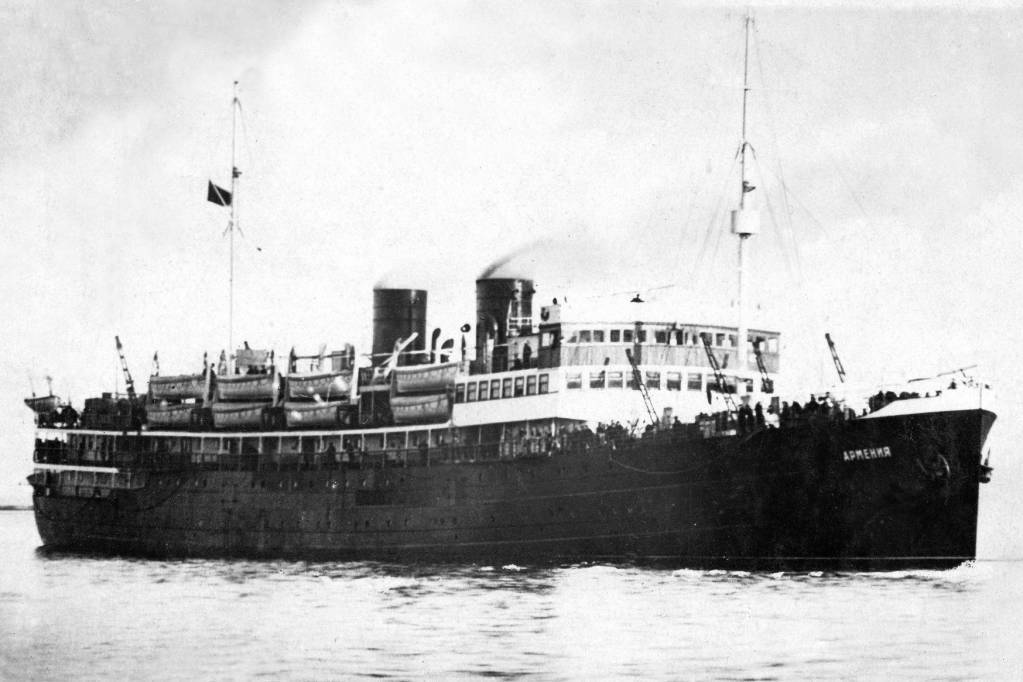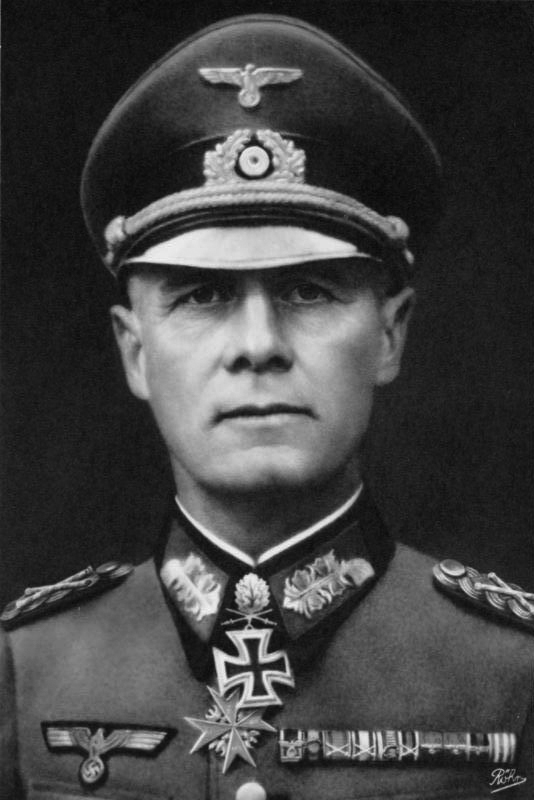The leaders who, for many years, have been at the head of the French armies have formed a government. This government, alleging the defeat of our armies, has made contact with the enemy in order to stop the fighting. It is true, we were, we are, overwhelmed by the mechanical, ground and air forces of the enemy. Infinitely more than their number, it is the tanks, the aeroplanes, the tactics of the Germans which are causing us to retreat. It was the tanks, the aeroplanes, the tactics of the Germans that surprised our leaders to the point of bringing them to where they are today.
 But has the last word been said? Must hope disappear? Is defeat final? No!
But has the last word been said? Must hope disappear? Is defeat final? No!
Believe me, I who am speaking to you with full knowledge of the facts, and who tell you that nothing is lost for France. The same means that overcame us can bring us victory one day. For France is not alone! She is not alone! She is not alone! She has a vast Empire behind her. She can align with the British Empire that holds the sea and continues the fight. She can, like England, use without limit the immense industry of the United States.
This war is not limited to the unfortunate territory of our country. This war is not over as a result of the Battle of France. This war is a world war. All the mistakes, all the delays, all the suffering, do not alter the fact that there are, in the world, all the means necessary to crush our enemies one day. Vanquished today by mechanical force, in the future we will be able to overcome by a superior mechanical force. The fate of the world depends on it.
I, General de Gaulle, currently in London, invite the officers and the French soldiers who are located in British territory or who might end up here, with their weapons or without their weapons, I invite the engineers and the specialised workers of the armament industries who are located in British territory or who might end up here, to put themselves in contact with me.
Whatever happens, the flame of the French resistance must not be extinguished and will not be extinguished. Tomorrow, as today, I will speak on the radio from London.
See article on Charles de Gaulle’s ‘Appeal of 18th June‘.

Rupert Colley.
Read more about the war in The Clever Teens Guide to World War Two available as an ebook and 80-page paperback from Amazon, Barnes & Noble, Waterstone’s, Apple Books and other stores.
 These acts of farce, codenamed Operation Himmler, were organised by
These acts of farce, codenamed Operation Himmler, were organised by  The war was not going well for Italy and Mussolini. Campaigns against Greece and Albania had ended in ignoble defeat and things were going poorly for Italian forces fighting in North Africa. The Italian people were beginning to taste the bitter fruit of disillusionment with their leader.
The war was not going well for Italy and Mussolini. Campaigns against Greece and Albania had ended in ignoble defeat and things were going poorly for Italian forces fighting in North Africa. The Italian people were beginning to taste the bitter fruit of disillusionment with their leader. The ghost of Dunkirk has been a constant presence in Britain’s consciousness ever since the events that played out in this French coastal town in the spring of 1940. It scarred us but it has also provided a benchmark for endurance and stoicism, the ‘Dunkirk spirit’. But it’s easy to forget what exactly happened on that French beach. Now, 77 years on, we have Christopher Nolan’s latest film, Dunkirk.
The ghost of Dunkirk has been a constant presence in Britain’s consciousness ever since the events that played out in this French coastal town in the spring of 1940. It scarred us but it has also provided a benchmark for endurance and stoicism, the ‘Dunkirk spirit’. But it’s easy to forget what exactly happened on that French beach. Now, 77 years on, we have Christopher Nolan’s latest film, Dunkirk. Born in 1905, Max Schmeling had advanced through the boxing ranks within Germany and Europe and even impressed Jack Dempsey, heavyweight champion, in a friendly fight during the champion’s tour of Europe. But to be a true star of the boxing world, one had to conquer the US. And it was to America, in 1928, the 23–year-old Schmeling travelled.
Born in 1905, Max Schmeling had advanced through the boxing ranks within Germany and Europe and even impressed Jack Dempsey, heavyweight champion, in a friendly fight during the champion’s tour of Europe. But to be a true star of the boxing world, one had to conquer the US. And it was to America, in 1928, the 23–year-old Schmeling travelled.
 Thick snow and heavy fog prevented the Americans from employing their airpower and the German advance of 250,000 men forced a dent in the American line (hence battle of the ‘Bulge’). Germans, dressed in American uniforms and driving captured US jeeps, caused confusion and within five days the Germans had surrounded almost 20,000 Americans at the crossroads of Bastogne. Their situation was desperate but when the German commander gave his American equivalent, Major-General Anthony McAuliffe, the chance to surrender, McAuliffe answered with just the one word – ‘Nuts’.
Thick snow and heavy fog prevented the Americans from employing their airpower and the German advance of 250,000 men forced a dent in the American line (hence battle of the ‘Bulge’). Germans, dressed in American uniforms and driving captured US jeeps, caused confusion and within five days the Germans had surrounded almost 20,000 Americans at the crossroads of Bastogne. Their situation was desperate but when the German commander gave his American equivalent, Major-General Anthony McAuliffe, the chance to surrender, McAuliffe answered with just the one word – ‘Nuts’. Sunk in the Black Sea, the exact location of the wreck is still a mystery and for years, the question remained – was a hospital ship, identified by a Red Cross, a legitimate target?
Sunk in the Black Sea, the exact location of the wreck is still a mystery and for years, the question remained – was a hospital ship, identified by a Red Cross, a legitimate target? Rupert Colley.
Rupert Colley. Born 15 November 1891, Erwin Rommel was, as Churchill suggests, respected as a master tactician, the supreme strategist who, in 1940, helped
Born 15 November 1891, Erwin Rommel was, as Churchill suggests, respected as a master tactician, the supreme strategist who, in 1940, helped  Pictured: German soldiers defending the French port of Dieppe against the Anglo-Canadian raid, 19 August 1942.
Pictured: German soldiers defending the French port of Dieppe against the Anglo-Canadian raid, 19 August 1942.